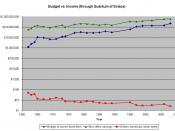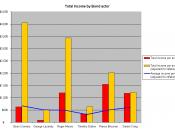James Bond movies constitute a distinct sub-genre of the action/spy films; driven by the representation of Bond himself plus a sexual consort on a mission to save the world in exotic settings and distinct mood. At the centre is the representation of James Bond as a suave, sophisticated, wisecracking, resourceful, good looking young man whose attitude brings the various elements of this espionage genre together in a unique and original way. The type of narrative audiences expect is structured around a blend of high-octane action, suggest sexuality and witty repartee delivered in am engaging throwaway manner.
James Bond is a secret agent. More than that, he's part of an MI6 elite force whose agents have a unique power: A license to kill. His interests lie in capture, possession and influencing others to serve his plans. His plans, however, are mostly those of his government. After all, he's a spy but he's not the clandestine type.
His menace to his enemies is mostly known. He is not represented as an owl waiting in the dark for prey. He likes to get near to the person he's about to fight, and whom he always manages to conquer, putting in the final punch with a tongue-in-cheek witty remark.
Bond, however, is somewhat of a paradox. He is always the same and does not age yet he changes with time always revitalised for a contemporary audience. In Die Another Day, while the character is still a major womanizer and has not lost any of his charm, the movie kicks off with typically outrageous pre-credit sequence where we see Bond and backup surfing skyscraper-sized waves and heading into the demilitarised zone in North Korea. He then hijacks a secret arm's deal and leads a mad hovercraft chase across the Korean border. We then see...



A good essay
this is a great appeal of the spy genre, lots of great info and research.
2 out of 2 people found this comment useful.